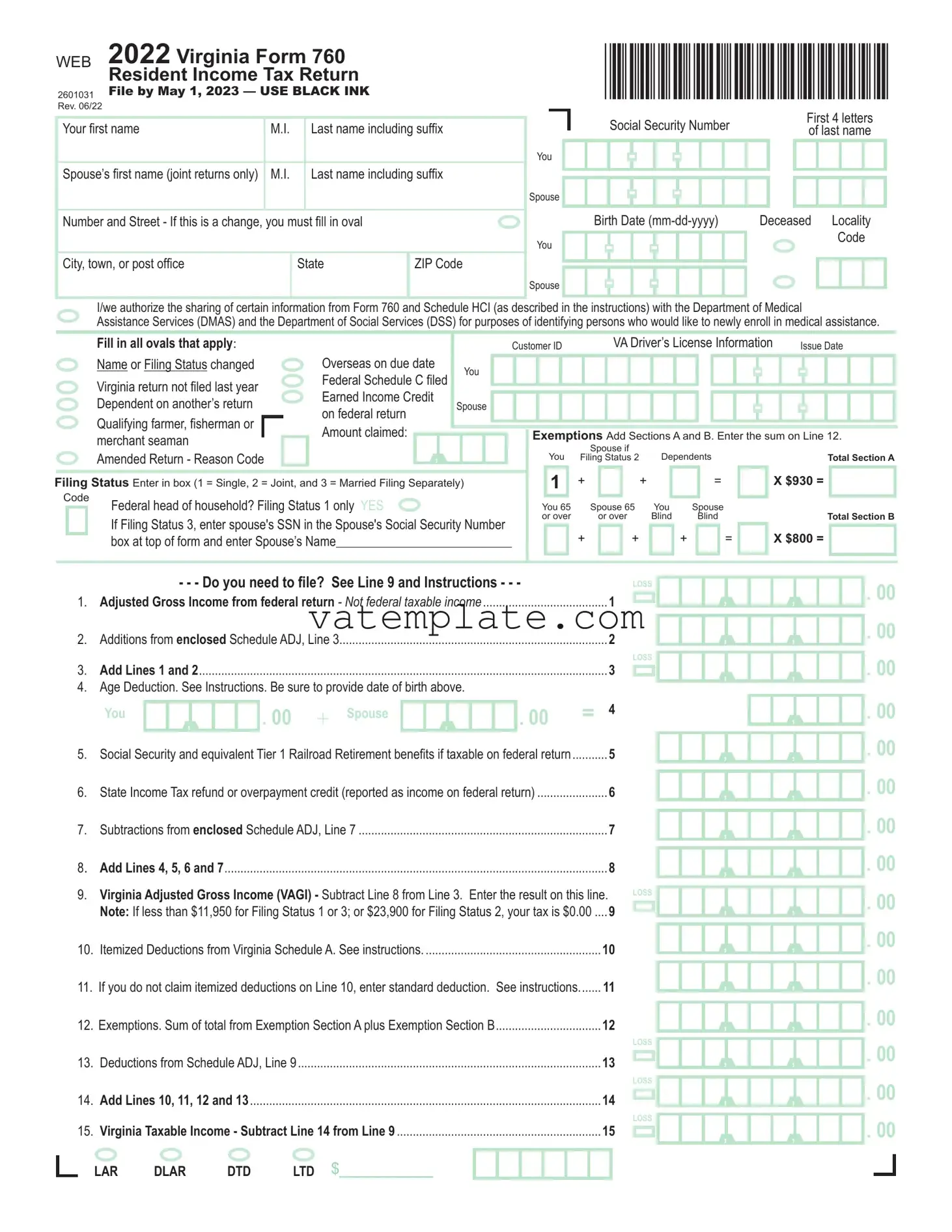Residents of Virginia who have earned income within the tax year need to file Form 760. Specifically, you must file if your Virginia Adjusted Gross Income (VAGI) exceeds certain thresholds, which vary based on filing status. For single filers or married individuals filing separately, the threshold is $11,950. For married couples filing jointly, it's $23,900. If your income is below these amounts, you may not owe any tax. However, you might still want to file to claim any refundable credits or to report any Virginia income tax withheld from your earnings.
You need several pieces of information to fill out Form 760, including:
-
Your Social Security Number and, if filing jointly, your spouse’s Social Security Number.
-
Total income for the year, which can be found on forms such as W-2s and 1099s.
-
Information on deductions, exemptions, and credits you're claiming.
-
Your Virginia Adjusted Gross Income.
-
Amount of Virginia income tax withheld, shown on your W-2 or 1099 forms.
-
Details of any estimated tax payments made during the year.
Guaranteeing accuracy in these details is crucial for correct tax calculation and to avoid processing delays.
The deadline to file Form 760 is May 1. If May 1 falls on a weekend or a holiday, the deadline is extended to the next business day. For those filing through mail, the postmark date is considered the date of filing. It's important to meet this deadline to avoid potential late filing penalties and interest on any taxes owed.
Yes, Virginia residents have the option to file Form 760 electronically through the Virginia Department of Taxation's website or by using approved tax software. Electronic filing (e-filing) is faster, more secure, and typically results in quicker processing times for refunds compared to paper filing.
If you discover an error on your filed Form 760, you should file an amended return using Form 760X as soon as possible. This form allows you to correct filing status, income, deductions, or credits. Filing an amended return is important to ensure that your tax liabilities are correct, potentially avoiding interest and penalties for underpayment.
After calculating your taxable income and applying the appropriate tax rates and credits, the form will show whether you have tax due or are entitled to a refund. If you owe tax, you can submit your payment online, by phone, or through mail. For refunds, you have the option to receive them via direct deposit or check. If expecting a refund, providing bank account information for direct deposit will expedite the receipt of your funds.
Are there any credits or deductions specific to Virginia that I should know about?
Yes, Virginia offers various state-specific credits and deductions, such as:
-
Credit for Low-Income Individuals or Families
-
Credit for Taxes Paid to Another State
-
Deductions for Age or Blindness
-
Standard Deduction or Itemized Deductions specific to Virginia
Taking advantage of these credits and deductions can lower your taxable income or directly reduce your tax bill.
When filing Form 760, you may need to attach:
-
W-2 forms showing your earnings and state tax withholding.
-
Any 1099 forms received if they show Virginia tax withholding.
-
Schedule(s) for specific deductions or credits you're claiming.
-
A copy of your federal tax return if required.
Ensure that all required documents are attached to avoid delays in processing your return.
If I need more time to file, can I get an extension?
Virginia allows for an automatic six-month extension to file your tax return, moving the deadline from May 1 to November 1. Note, however, that this extension is only for filing the return, not for payment of any taxes you may owe. To avoid penalties and interest, you should estimate and pay any taxes by the original May 1 deadline.


